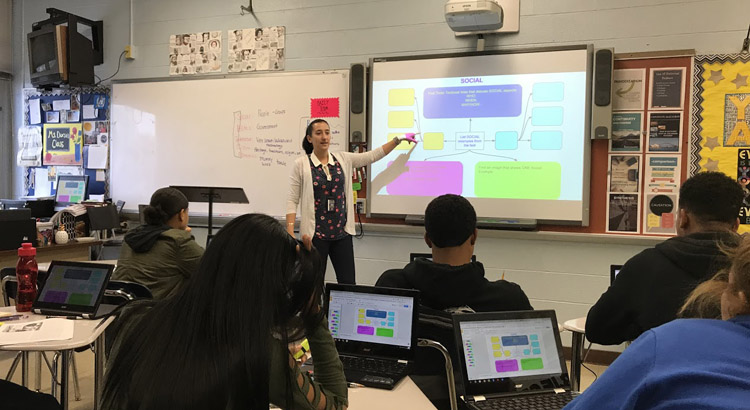This is part of a series of posts from nominees for our LifeChanger of the Year educator recognition program. We meet scores of fascinating LifeChangers every year who have interesting perspectives to share about children, education and life.
My first experience in the classroom was one of comfortable monotony. I faced the typical challenges that every professor had warned me about: perfectionist students and their demanding parents, filling out lesson plan templates and managing my time. The classroom walls were beautifully decorated; every student was equipped with a plethora of supplies.
My cooperating teacher guided me through a traditional model of lecture followed by a content-based activity that all built up to an exam. The students seemed comfortable with this style of learning, and, honestly, it was pretty easy to mimic.
The first job I got after graduation was in an inner-city school. On my first day, I remember reviewing my roster and counting 42 names. Forty-two! It took me about 15 minutes just to get through roll-call. The students had no reaction; clearly, this was their normal.
As I observed my surroundings I noticed a lot of other differences from this classroom compared to the one from student teaching. The walls were bare, paint was chipping, and there were holes everywhere. Many of my students did not have their own notebooks, pens, or pencils. My supervisor informed me that there were not enough textbooks to go around.
I began to cover the walls with great expressions of student work and didn’t mind providing the students with supplies. I was also forced to look outside of the textbook to find and create my own resources, and realized that the old, one-size-fits-all model from student teaching was not going to cut it here.
Many of my students were new to the country and needed individualized resources. The concept of differentiation didn’t exist to me during student teaching (or even college for that matter), and now it was the foundation of my entire educational process.
Working in the inner-city has given me a greater appreciation for young people. My students share stories with me about the everyday struggles they face. Only to them, they aren’t struggles. Many of them hold down jobs on top of being students. Many have lost loved ones to the dangers of street violence. Many are parents themselves.
Despite these struggles, my students never miss a beat in the classroom. Even though I can’t relate on a personal level to what they are going through, they always make me feel included and at home in their world. I tell them on a daily basis how strong they are and how much I admire them.
I cannot imagine going back into the comfortable monotony of suburban schools. I feel challenged every day at work, but not in the way some might think. My challenge is digging deep into my tool box and developing new strategies and activities that kept my classroom exciting on a day-to-day basis. My challenge is figuring out what works well for each individual student and providing them with choices. Most importantly, my challenge is becoming emotionally available to kids who need more than just a teacher. At the end of the day, teaching is about establishing relationships with young people and being the person that they can rely on to help them grow.
I was told before I started my inner-city job that if I could change the life of just one person I should be happy with that. I never thought that one person would be me.
Learn more about Laura Durso on her LifeChanger of the Year profile.
TC100537(0418)3

